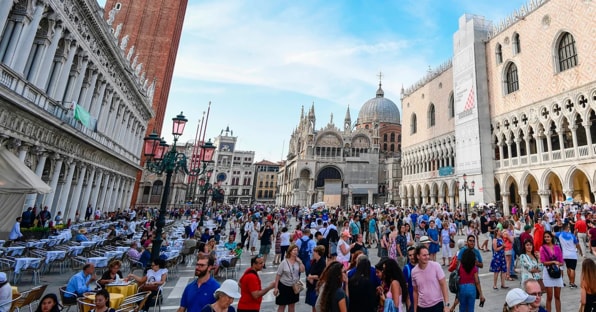Digital, an indispensable means of tourist interception and price fixing
[ad_1]
You talk about travel and you immediately think about the destination, its attractions, and perhaps how sustainable it is. Dozens of studies try to investigate in advance (also on the basis of reservation data) the desires of Italians to spend their holidays in the best possible way and a few of them turn on the light to check their knowledge of the structures of their customers. The research, conducted by the Digital Innovation Observatories at the Polytechnic College of Milan in collaboration with Spain’s Minsait (a consulting firm specializing in the field of digital transformation), goes precisely in this direction.
Knowledgeable and interact with guests
According to the report, in fact, the path of operators towards creating a coherent and integrated relationship with tourists is still long, and this is evidenced by the fact that only 6% of companies confirm that they have a good knowledge of the profiles, tastes and preferences of their visitors and only 2% have established an ongoing relationship with all of these (including international travelers) who choose Italy as a destination while 38% do not have sufficient knowledge of it. The interaction with the guest seems to occur only in time for the sale / use of the packaging. Customer knowledge does not appear to be comprehensive even if there are 37% of companies that manage to grow and maintain a proactive relationship with travelers only through certain communication channels and/or only for certain categories of customers (for example the most loyal) or activity (for example in pre-sales, but not in the post-sales and assistance phase). Symbolic, but negative, is the fact that nearly two-thirds of companies confirm that they interact with their guests only at the time of the actual sale or use of the service. The experts who drafted the study (rightly) speak of “a state of immaturity that prevents us from having a full view of the domestic and international tourists who choose Italy as a destination”. In fact, only 27% of the structures surveyed achieved what is called a “single customer view” (individual view of the customer through all touch points used) while 43% started building it using only some available data and about a third have yet to integrate any kind. of data (but it works on it).
Lack of interest in managing the digital customer journey
If, on the part of the operator, the optimal choice in terms of holidays is to be able to offer a personal and smart travel experience, according to Minsait, then the obligatory step that must be taken is to open up to the technological revolution to bring the heritage of the peninsula closer to the visitors in the best possible way, with a focus on innovation The proposals are in three priority areas: data, customer experience and the phygital model. Making full use of the available information can help businesses and local authorities analyze the behavior of tourists/travelers and identify emerging trends, in order to better adapt the offer and at the same time monitor the impact of tourism on local communities and on the environment. Nowadays, the main communication channels used in visitor relations are social networks, sites that own facilities or accommodation chains, email and call centers, and they also play a central role in customer relations and communication activities. However, the true omnichannel strategy is missing, to the point where only 16% of the companies analyzed claim to be able to track their customers on all channels, while 60% are able to do so only on some (mainly digital channels). Finally, 24% of companies are unable to recognize customers when they interact with corporate channels, and they lack an upstream system to classify them and intelligent integration of all data collected.
Italians choose the destination based on the price
Another survey signed by the fintech platform Revolut on travel trends for summer 2023 (study conducted in collaboration with Dynata on a representative sample of the 1,000-adult Italian population) indirectly confirms the lack of a report on the “value” relationship between the guest and the accommodation facility. The preferred driver for nearly eight in ten Italians (76% to be exact) is actually the cost of the trip, followed by health/safety and distance to the destination, both at 43%. On average, the Italians’ trip budget for a week will be concentrated above all in the range between 250 and 500 euros (24% of those interviewed say so) and between 500 and 1000 euros (36%) while only 5% think they spend more than two thousand Someone to enjoy seven days off. Curious, regarding technology’s contribution to travel, is the fact that 15% of those interviewed use a digital piggy bank or other similar tools to allocate useful money for their trips. Instead, according to Airbnb, bookings are growing in more convenient destinations in southern Italy, such as Ugento and Carovigno in Puglia, Tertinia, Sant’Antioco and Badesi in Sardinia, and Brindisi, Salerno, Vico Equense, Pompeii and Naples in Campania.
[ad_2]
Source link








